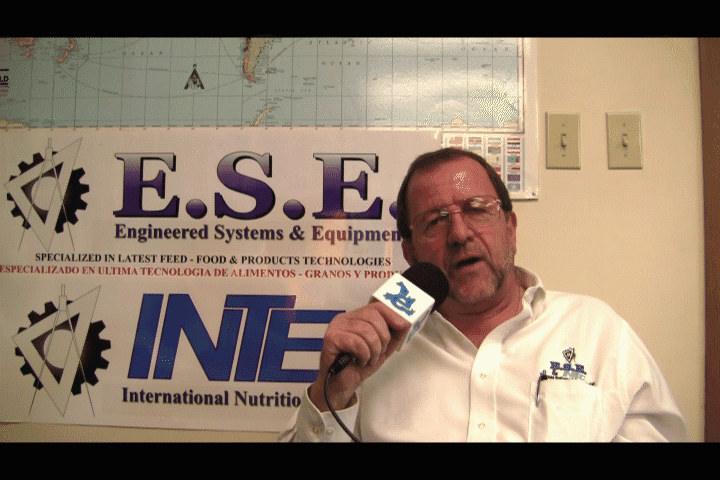Explore all the information on
Food safety
Welcome to the page about Food safety of Engormix; a source of knowledge on Food safety.
1. Introduction Mycotoxins are naturally occurring secondary metabolites produced by various genera of molds, such as Aspergillus, Fusarium, Penicillium, and Alternaria. About 400 mycotoxins have been identified, with some of the most important ones being aflatoxins B1 (AFB1), aflatoxin B2 (AFB2), Ochratoxin (OTA), and deoxynivalenol (DON) [1]. The consumption of mycotoxin-contaminated foods can have serious health consequences, being potentially fatal, depending on the specific...
Comments : 0
Recommendations: 0
The International Production & Processing Expo (IPPE) offers attendees access to the latest in protein and feed technology through exhibits and educational programing. TECHTalks are free, 20-minute technical presentations, offered each day at IPPE. For the 2024 IPPE, 97 presentations will be given in the TECHTalks theaters in the A-Hall at Booth A244, in the B-Hall at Booth B48027 and in the C-Hall at Booth C14185.
The TECHTalks presentations will address many topics, including...
Comments : 0
Recommendations: 0
.jpg&w=3840&q=75)

The Circular Bioeconomy and its impact on Feed Ingredients
Suggested link
I. Introduction Immediately after birth, or hatch in birds, the initial inoculum shapes the gut microbiota for life. The first bacteria to settle in the intestine can attach to epithelial cells with no competition, rapidly establish, grow, and set the intestinal environment to suit their own needs (Stecher and Hardt, 2011; Edwards, 2017). The first bacterial settlers have the most substantial influence on developing the host's immune system and overall ability to thrive (Stecher...
Comments : 1
Recommendations: 0
INTRODUCTION Listeria monocytogenes is a Gram-positive, facultative anaerobe that is the causative agent of listeriosis (Gudbjörnsdóttir et al., 2004). They are considered saprophytic organisms with the capability to adapt to an ever-changing environment because they possess multiple stress response mechanisms to overcome varying temperatures, salt concentrations and pH (Berrang et al., 2000; Milillo et al., 2012a; Giaouris et al., 2015; Saldivar et al., 2018). Listeria...
Comments : 0
Recommendations: 0
The Meat Institute is hosting several special workshops at the International Processing & Production Expo (IPPE) in Atlanta between Jan. 29 – Feb. 1, 2024.
The first featured session, Food Safety Design Principles Workshop, will provide an in-depth overview of the 10 Principles of Food Safety Design and how to apply these principles in processing facilities. This workshop will take place over two days – Jan. 29 from 1 p.m. to 5:30 p.m. ET and Jan. 30 from 7 a.m. to 2...
Comments : 0
Recommendations: 0
1 Introduction Mycotoxins are toxic metabolites produced by fungi. The fungi grow on food commodities such as cereals, coffee, fruits, nuts, oilseeds, and spices when there are favorable conditions (Awuchi et al., 2021). Currently, over 400 mycotoxins have been recorded, and 25% of food has been shown to be contaminated. (Tola and Kebede, 2016; Escrivá et al., 2017); however, only a few are of concern from a food safety perspective: Aflatoxins (AFs), Fumonisins (FBs),...
Comments : 0
Recommendations: 0
.jpg&w=3840&q=75)

The Circular Bioeconomy and its impact on Feed Ingredients
Suggested link
INTRODUCTION Mycotoxins are toxic secondary metabolites produced by filamentous fungi on agricultural products, which cause acute or chronic toxic effects in farm animals and humans called mycotoxicosis (Schirone et al., 2016; Du et al., 2017). The contamination of agricultural products with fungi occurs during pre-and post-harvesting stages due to inappropriate and unhygienic practices (Bernhoft et al., 2012). The Food and Agricultural Organization (FAO) of the United Nations...
Comments : 0
Recommendations: 0
INTRODUCTION Mycotoxins are secondary metabolites that are produced by microfungi which are capable of causing disease and death in humans and other animals (Bennett and Klich, 2003). According to a risk assessment overview provided by the European Food Safety Authority (EFSA) (EFSA CONTAM Panel) related to the main contaminants in food and feed, mycotoxins represented 15% of the overall risk for human and animal health, for the period between 2003 and 2012 (EFSA,...
Comments : 0
Recommendations: 0
1. Introduction One of the important tasks facing the Russian agro-industrial complex is to increase the digestibility of grain components of feed, increase the content of nutrients in feed. In addition, feed accounts for the largest share in the structure of costs for the production of livestock products. One of the promising directions for the intensification of technological processes is the change in the physical and chemical properties of feed products when exposed to them...
Comments : 0
Recommendations: 0
Introduction Mycotoxins are secondary metabolites produced by various fungi in a variety of commodities and foods. These compounds are not directly involved in the basic functioning of fungi, but some appear to play a “chemical offense” role and increase the susceptibility of the host organism to further fungal infection 1 . As suggested by their name, mycotoxins can cause toxic effects when consumed. The potential harmful effects of mycotoxins vary and a...
Comments : 1
Recommendations: 0
.jpg&w=3840&q=75)

The Circular Bioeconomy and its impact on Feed Ingredients
Suggested link
INTRODUCTION Consumer preferences are leading to changes throughout the poultry industry (Northcutt and Jones, 2004; Fanatico et al., 2005; Meneses et al., 2017). From 2016 to 2017 the amount of organic poultry production has increased by 76%, holding a 2016 market share of $750 million (Philips, 2017). This is compared to an increase of the total organic agricultural farming market share which rose only 23% (Philips, 2017). This is partially influenced by consumers believing the...
Comments : 0
Recommendations: 1
Introduction An estimated 30 to 50% of food commodities are lost during pre-harvest or post-harvest globally, which does not only threaten global food security but wastes 1.47–1.96 Gha of arable land, 0.75–1.25 trillion cubic meters of water and 1 to 1.5% of global energy (Fox and Fimeche, 2013). The pre-harvest and postharvest losses in food commodities may occur due to attack by several biotic and abiotic factors. In storage system, fungal bio-deterioration of stored...
Comments : 0
Recommendations: 0
...
Comments : 0
Recommendations: 0
...
Comments : 0
Recommendations: 0
.jpg&w=3840&q=75)

The Circular Bioeconomy and its impact on Feed Ingredients
Suggested link
The 64th National Symposium 2023, came to a close on Saturday, August 19, 2023, after two days of insightful discussions on the agriculture, livestock, and fishery industries. The event, held at Le Meridien, New Delhi, brought together industry experts, government officials, and stakeholders to address key...
Comments : 0
Recommendations: 0
I. Introduction Eggs are an affordable raw agricultural commodity with a high nutrient density. Eggs serve a key role in diets around the world. Maintaining the quality of eggs is a worldwide concern. Generally, there are three types of egg quality: 1) physical, 2) functional, and 3) microbial. During this presentation, all three types of egg quality will be discussed and factors which influence egg quality characteristics will be explained. Understanding the types of egg quality, as...
Comments : 0
Recommendations: 0
Recent cases requiring the Government Chemist’s help have ranged from genetically modified rice from China to pesticides and mycotoxins in different foods, according to a referee analyst.
Paul Hancock told attendees at the Government Chemist Conference that a variety of technically complex cases are being received with the workload returning to normal after a decline during the COVID-19 pandemic.
The Government Chemist resolves scientific disputes in the food and feed...
Comments : 0
Recommendations: 0
This award is given to stimulate and reward research in the field of poultry (chicken, turkeys and eggs) pre- and post-harvest food safety. Nominee’s research should exhibit a sustained impact on decreasing pathogenic organisms in pre- and post-harvest situations. It is given every other year.
...
Comments : 0
Recommendations: 0
.jpg&w=3840&q=75)

The Circular Bioeconomy and its impact on Feed Ingredients
Suggested link
Introduction: The cross-contamination of non-medicated feed with residues of antimicrobials causes a public and animal health concern associated with the potential for selection and dissemination of resistance in commensal and potentially zoonotic bacteria. To identify the extent of the situation, we built a model that provides a way to estimate the percentage of cross-contaminated pig feed in total and per different levels at which cross-contamination may occur (i.e....
Comments : 1
Recommendations: 0
By Michele Suman
New Food Magazine
With mycotoxins on the rise, food safety and authenticity expert Michele Suman looks at how to deploy tandem mass spectrometry for mycotoxin quantification
Mycotoxin contamination seriously threatens the safety and stability of global food chains. Produced by fungi, these potentially toxic secondary metabolites affect a broad range of foodstuffs,...
Comments : 0
Recommendations: 0












